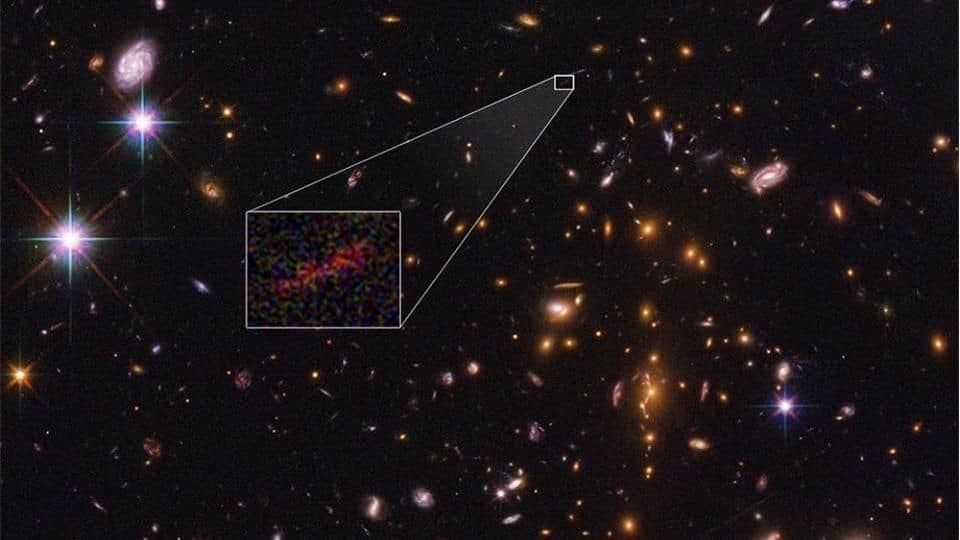
NASA captures clearest-ever image of the farthest known galaxy!
What's the story
NASA has successfully captured a distinct image of the farthest known galaxy in our universe using advanced telescopes and gravitational lens. The primitive galaxy called "SPT0615-JD" existed when the universe was 500 million years old. NASA said using the Hubble and Spitzer space telescopes they produced an image of the galaxy that was "stretched and amplified by a phenomenon called gravitational lensing." Here's more!
Details
Can determine galaxy's size and shape: Researcher
"No other candidate galaxy has been found at such a great distance that also gives you the spatial information that this arc image does," said Brett Salmon, a postdoctoral researcher at the US's Space Telescope Science Institute. Salmon, the study's lead author, stated: "By analyzing the effects of gravitational lensing on the image of this galaxy, we can determine its actual size and shape."
Captured Images
Gravitational lensing made SPT0615-JD appear brighter
While primitive galaxies have been seen earlier, scientists couldn't capture them properly. Some were captured, but they appeared like red dots due to smaller sizes and greater distance from Earth. But in the case of SPT0615-JD, the gravitational field of a massive foreground galaxy amplified the light from the background SPT0615-JD galaxy and also made it appear like an arc due to gravitational lensing.
About
What is gravitational lensing?
Gravitational lensing is simply the bending of light from a background object (source) by the gravitational field of a massive foreground object (which acts like a lens) as the light travels towards the observer, making the source look focused and brighter. A century ago, Albert Einstein in General Theory of Relativity predicted that gravity of massive objects warps (bends) space through which they travel.
The Phenomenon
Gravitational lenses could also distort object's appearance
Astronomers use this gravitational lensing phenomenon - that produces a zoom lens-like effect - for yielding clearer images of distant galaxies, which otherwise aren't visible to the existing telescopes. Though gravitational lensing produces amplified images, it could also distort the appearance of the target object (light source), causing it to look slightly curved (just like how SPT0615-JD appeared like an arc).
Estimations
SPT0615-JD is smaller, lighter than Milky Way galaxy
Based on Hubble and Spitzer data, Salmon estimated the lookback time (time-difference between when the object's light is emitted and when it is detected) to SPT0615-JD was 13.3-billion years. Its maximum weight is three-billion solar-masses; it spreads across 2,500 light-years. Our Milky Way weighs 580-billion solar-masses and is 100,000 light-years wide. SPT0615-JD could be a young galaxy that formed shortly after the Big Bang.
Webb Telescope
An exciting target for upcoming Webb Telescope: Salmon
SPT0615-JD is at a point in space beyond which the Hubble cannot see or detect objects, said Salmon. However, SPT0615-JD is just "the beginning for the upcoming NASA James Webb Space Telescope's powerful capabilities." He added, "This galaxy is an exciting target for science with the Webb telescope as it offers the unique opportunity for resolving stellar populations in the very early universe."